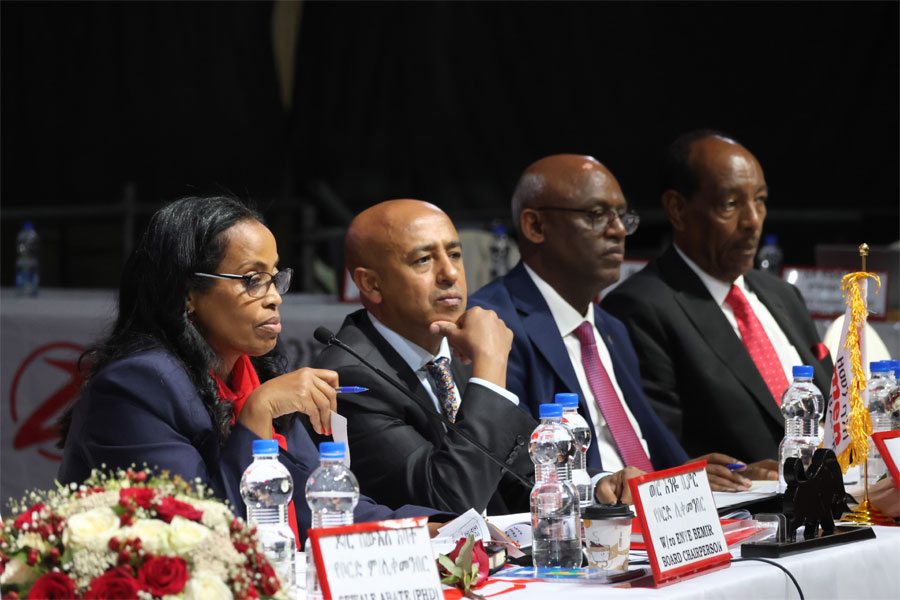
Project Syndicate (PS): You have often pointed out that inflation has been exacerbated by trade protectionism, which weakens the market competition that induces firms to keep prices low, and by immigration restrictions, which lock in labour shortages. At a time when a return to unfettered globalization appears politically unfeasible – as you recently acknowledged, new restrictions on exports to China have received bipartisan approval – which policy changes would have the most impact?
Pinelopi Koujianou Goldberg: First, it is important to remember that controlling inflation is not and should not be the only goal of policy. Sometimes, we must pursue imperatives that may generate inflationary pressures – for example, addressing climate change.
But let us focus on inflation for a moment. Taking into account political feasibility – and in addition to managing interest rates – I would suggest, first, easing immigration restrictions, especially for high-skill workers and in sectors where there are labour shortages, such as healthcare and transportation.
Second, greater efforts should be made to boost trade with and investment in economies other than China. India or countries in Africa come to mind. At the same time, Western leaders should adopt a more cooperative stance toward China, especially in the fight against climate change. For example, solar-panel manufacturing is three times more expensive in the US and Europe than in China.
Another useful step would be encouraging employers to adopt hybrid-work models – allowing for more remote work – to support job recruitment, boost retention rates, and generally stimulate the domestic labour supply. Workers worldwide have made clear that they value the added flexibility that remote work offers.
Finally, among the changes that would have the most impact would be bringing the war in Ukraine to an end. As long as the conflict rages, it will continue destabilising the world economy, with serious consequences for inflation and growth. But this is outside the scope of economic policy.
Q: A year ago, you argued that while the US and China had both been harmed by the “tit-for-tat exchange of protectionist measures,” bystander countries had benefited from higher exports. By September, however, you suggested that the Ukraine war had finally “stopped” globalization. Are “the big export winners of the trade war” still reaping benefits from proliferating trade restrictions among major powers? Could “deep” trade agreements that address tariffs and non-tariff barriers be the key to protecting smaller economies from deglobalization?
Indeed, I view the war in Ukraine as a game-changer, owing less to its direct effects on trade than to its indirect effects, as it reinforced the backlash against globalization.
In a December 2021 paper, my co-authors and I showed that, for many bystander countries, the trade war between the US and China boosted global exports. So, rather than contributing to deglobalization, it helped to spur a shift to “globalization 2.0.”
It is too early to say whether the same has been the case with the war in Ukraine, as the full export data are not yet available. But anecdotal evidence suggests that the war’s short-run economic effects have been mixed and uneven. Europe has been hit hard. As for developing countries, some – such as India – have secured cheaper oil imports from Russia. At the same time, however, several countries – including India – have been priced out of the natural-gas market.
It is hard to say what will happen in the longer run, as the landscape is constantly changing. Some developing countries are optimistic – perhaps too optimistic in some cases. In India, for example, some believe that their country could become the “new China.” But this is unlikely.
Our earlier research showed that the bystander countries that benefited the most from US-China trade tensions were already highly integrated into the global economy through extensive trade agreements. India is not in that group. Moreover, the US has not only turned on China; its attitude toward trade and globalization more broadly has shifted. It will not allow India to replace China in the global economy.
The same goes for developing countries better integrated than India into the global trading system, such as Malaysia and Vietnam. They will continue to export and prosper, but only as long as their growth does not challenge advanced countries’ labour markets and technological dominance.
Multilateralism may retreat, but there is renewed interest in using regional and plurilateral agreements to foster trade among like-minded countries. Examples include the Regional Comprehensive Economic Partnership, the African Continental Free Trade Area, and the Comprehensive and Progressive Agreement for Trans-Pacific Partnership.
There may still be scope for developing countries to participate in trade. They should not expect the rapid growth and poverty reduction associated with effective multilateralism and flourishing trade with high-income countries.
Q: Last July, you criticised the prevailing approach to tackling inflation in the United States, arguing that interest-rate hikes would be “insufficient to rein in inflation in the short run” and “likely [to] increase unemployment over time.” Since then, the US Federal Reserve has continued to hike rates, inflation has started to slow, and job growth has remained stronger than expected. Do recent data suggest that the Fed has done enough – or too much? How credible is its signal that the federal funds rate will exceed five percent by the end of this year?
To be clear, I did not argue that interest-rate hikes are not useful to curb inflation. Instead, I pointed out that interest rates alone would be insufficient to bring price growth under control. Interest rates target demand, but supply shortages have been equally important in the latest bout of inflation.
The good news in the United States today is that inflation has been reined in, and the labour market remains strong. But we are not out of the woods. The Fed recognizes this (and has repeatedly pointed it out). The central bank has been wise to pay close attention to the data rather than pre-commit to a specific rate-hike trajectory. I have no issue with its actions.
That said, if the Fed sticks with its long-run inflation target of two percent, further rate increases will be needed, with potentially adverse effects on the labour market. It would be advisable to raise the target to a more realistic level – say, to three to four percent. There is nothing magical about a two percent inflation target.
It makes little sense to cling to it at a time when circumstances – including the war in Ukraine, tensions with China, recession fears, and the climate imperative – make it untenable.
Q: It is not only America’s rivals that have become targets – intended or not – of its protectionist policies. European leaders argue that US subsidies for cars, clean energy, and semiconductors pose a threat to their economies. Are they right? Is there a case for the US to support critical sectors, and how might it do so without harming itself and its allies?
I am not against the industrial policy in principle, a stance that may set me apart from many other economists. I believe that industrial policy can be great – when it succeeds. But, while there are many examples of successful industrial policies, there are many examples of policy failures. It is hard to know into which category a policy will fall ex ante, but I do have reservations about current US initiatives.
The US has the right to support important sectors to its economy, just as many other countries have done under various pretexts. But targeting modern sectors like semiconductors raises major challenges because these sectors have become increasingly complex and globally intertwined. It is hard for a government to see through this complexity and make the right choices.
At a minimum, it will require consultation with the private sector and industry experts. Cooperation with allies – who were not consulted on the new semiconductor export restrictions targeting China – is also critical.
But the question of how to avoid harming allies is not as straightforward as some seem to think. We have returned to the old zero-sum mindset, which holds that one country’s gain is another country’s loss. But if US clean-energy subsidies spur progress toward net-zero emissions, everyone will benefit. If Europe wants to respond by subsidizing its industries, leading to a race to the top, so be it.
More worrisome is America’s approach to its rivals. The US has stated quite explicitly that it does not aim only to promote its advanced technology sectors but is actively seeking to impede progress in China. This is the kind of attitude that leads to the cold war and a race to the bottom.
I still believe that the policies that best serve both US and global interests are the ones promoting peace and international cooperation. Think how much more could be achieved if the resources that are now being used to wage the hot and cold war – including the policing of export licenses – were allocated instead to child tax credits, investment in education, or compensation for low-income households for carbon taxes.
Q: Your forthcoming monograph, “The Unequal Effects of Globalization,” examines the complex relationship between trade and inequality. Where has trade increased inequalities, where has it reduced them, and how might trade policy be designed to minimize the former and maximize the latter?
One of the main points of the monograph is that the relationship between globalization and inequality is extremely complex and ultimately depends on which dimension of inequality one focuses on. I will offer here a very brief overview of some key ideas.
There is a consensus that trade (and globalization more generally) contributed to reducing global inequality, mainly by helping many countries in East Asia, as well as former communist countries in Central and Eastern Europe, to eliminate extreme poverty.
But it also increased one type of inequality within advanced economies: regional disparities between areas more exposed to import competition from low-wage countries (especially China) and areas sheltered from such competition or even benefited from exporting. In the exposed regions, factories closed, manufacturing employment was lost, and real wages stagnated. These communities also faced increased hardships that were not directly economic, such as higher crime rates.
Trade policy does not provide appropriate instruments for addressing these adverse impacts. But domestic economic and social policies can enable workers and communities to adjust to trade-related disruptions. That is why discussions of any new trade policy – such as a significant liberalization – must account for its disruptive potential. Policies for mitigating those disruptions can then be designed in advance.
If such advance planning is not possible, then it might be better to slow down the pace of change.
Regarding global inequality, several post-1990 World Trade Organization initiatives, such as the Trade-Related Aspects of Intellectual Property Rights (TRIPS) Agreement, have been criticized for serving the economic interests of multinationals headquartered in advanced economies rather than the development and welfare of low- and middle-income countries. Listening to developing-country voices during trade negotiations and disputes would help make the most of the positive aspects of globalization. Ultimately, trade is much more important for developing countries than it is for advanced economies.
Q: In a study last year, you and your co-authors cited the prevalence of the informal economy as a factor contributing to growth-measurement errors among middle- and low-income countries. At the height of the pandemic, the informal economy was a major topic of discussion, not least because informal workers and businesses struggled to secure government support. Did that experience catalyze any progress in measuring countries’ informal sectors? What data collection or analysis approaches can better capture the scale of informal activities?
The pandemic once again exposed the pitfalls of failing to capture the informal sector – which accounts for the lion’s share of economic activity in some low-income countries – in official statistics. Unfortunately, the fiscal pressures faced by many low-income countries during the pandemic have made it impossible for them to invest in data collection or improvements in measurement.
As for the approaches that would work best, some countries in Latin America (such as Mexico and Brazil) capture more informal activity through firm surveys and Census data, but this is not the case for the majority of other low- and middle-income countries.
I believe that our best hope for improving the measurement of countries’ informal sectors (in a cost-effective way) lies in digitalization. Even poor economies like India, Kenya, and Rwanda have made great progress in harnessing digital technologies to offer services that previously required physical infrastructure.
But, as we know from advanced economies’ experience, digitalization raises various issues concerning privacy and security. The ability to use digital technology to deepen our understanding of the informal economy may determine whether developing-country citizens are willing to trade some privacy for the benefits of better measurement.
PUBLISHED ON
Jan 24,2023 [ VOL
23 , NO
1186]

Life Matters | Sep 08,2024

My Opinion | Aug 13,2022

Fortune News | Feb 10,2024

Viewpoints | Aug 10,2024

Commentaries | Oct 24,2020

Featured | Jul 27,2025

In-Picture | Mar 02,2024

Fortune News | Jun 07,2025

News Analysis | Nov 03,2024

Fortune News | Oct 15,2022

Dec 22 , 2024 . By TIZITA SHEWAFERAW
Charged with transforming colossal state-owned enterprises into modern and competitiv...

Aug 18 , 2024 . By AKSAH ITALO
Although predictable Yonas Zerihun's job in the ride-hailing service is not immune to...

Jul 28 , 2024 . By TIZITA SHEWAFERAW
Unhabitual, perhaps too many, Samuel Gebreyohannes, 38, used to occasionally enjoy a couple of beers at breakfast. However, he recently swit...

Jul 13 , 2024 . By AKSAH ITALO
Investors who rely on tractors, trucks, and field vehicles for commuting, transporting commodities, and f...

Oct 18 , 2025
The political establishment, notably the ruling party and its top brass, has become p...

Oct 11 , 2025
Ladislas Farago, a roving Associated Press (AP) correspondent, arrived in Ethiopia in...

Oct 4 , 2025
Eyob Tekalegn (PhD) had been in the Governor's chair for only weeks when, on Septembe...

Sep 27 , 2025
Four years into an experiment with “shock therapy” in education, the national moo...